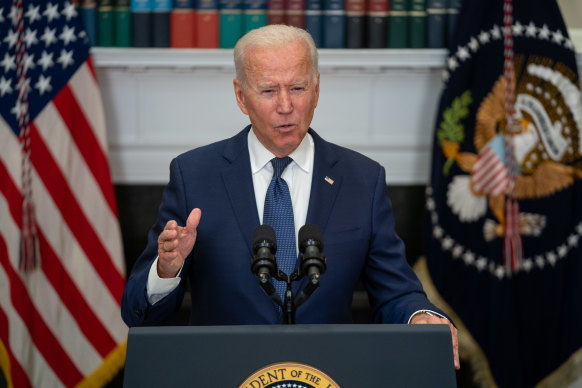After trade had increased from 30 per cent of world GDP to more than 40 per cent during the era of industrialisation, it had fallen to about 15 per cent by the end of World War II.
Loading
Third came the era of tariff reform between 1945 and 1980. Even before the war had ended, the Allies knew they’d have to fix the world economy. They decided to move to a system of fixed exchange rates and establish the IMF and the World Bank. Most importantly, they set up the General Agreement on Tariffs and Trade (now the World Trade Organisation).
The GATT arranged eight successive “rounds” of multilateral trade negotiations, in which the developed countries agreed to big reductions in their barriers to imports. Thanks to all this, trade doubled from 15 per cent of world GDP to 30 per cent.
This led on to the era of “hyperglobalisation” between 1980 and 2008, with the fall of the Berlin Wall in 1989 and collapse of the Soviet Union, bringing the Cold War to an end.
The eighth, biggest and final, “Uruguay” round of the GATT, in 1994, focused on increasing trade between the developed and developing countries, with many poor economies joining the WTO.
China’s economy began growing rapidly after it was opened up in the late 1970s, and in 2001 it was permitted to join the GATT, hugely increasing its trade.
The era also brought a move to floating exchange rates and deregulation of banking systems, leading to much increased investment between rich and poor countries.
As well, big advances in telecommunications, computerisation and the advent of the internet allowed a surge of trade in digital services, including data processing.
Resulting from all this, trade reached a peak of more than 55 per cent of world GDP in 2008, on the eve of the global financial crisis and the Great Recession.
The IMF bloggers label the present period, with figures from 2008 up to 2021, the era of “slowbalisation”. To date, those figures bear this out: trade has reached a plateau of about 55 per cent. More recent figures show world trade has largely bounced back from the initial effects of the pandemic’s global coronacession.

US President Joe Biden has been less combative than his predecessor, but he has not abandoned the trade war.Credit:Bloomberg
It seems the combined effect of the Great Recession and rising protectionist sentiment has stopped trade from continuing to shoot up relative to world GDP, but not caused it to fall back – or not yet.
Less optimistic observers, however, refer to present as the era of “deglobalisation”. They worry that we’re in the early stages of a period of “policy-induced geoeconomic fragmentation”.
It’s not hard to see what’s worrying them. First we had Britain deciding to leave the European Union, then the election of Donald Trump, vowing to “make America great again” by whacking up tariff barriers against the exports of friend and foe alike, and starting a trade war with China.
Now we have the use of trade and other economic sanctions by many countries to punish Russia in its war against Ukraine, which is fragmenting world trade.
Loading
US President Joe Biden has toned down his predecessor’s excesses, but not abandoned the trade war. This doesn’t seem to be about protectionism so much as America’s desire not to be overtaken by China as the world’s dominant superpower. In particular, the US wants to stay ahead of the Chinese in advanced digital technology, by denying them access to the latest and best semiconductors.
The risk is that the two could end up dividing the global economy into separate trading blocs, America and its democratic friends versus China and its autocratic friends. This would almost certainly slow the economic growth of both groupings.
And, as economist Dr John Edwards has written, dividing the trading world into good guys and bad guys would not suit us, nor our region. Our exports to China greatly exceed our exports to the US and other close security allies.
And all the East Asian economies – including Japan and South Korea – have China as a major trading partner. For that matter, China and the US are major trading partners of each other.
Fortunately, and despite all the sparring we’ve seen, Edwards and others find no evidence that the US and China have yet started to “decouple”.
Let’s hope economic sense prevails, and it stays that way.
The Business Briefing newsletter delivers major stories, exclusive coverage and expert opinion. Sign up to get it every weekday morning.
Stay connected with us on social media platform for instant update click here to join our Twitter, & Facebook
We are now on Telegram. Click here to join our channel (@TechiUpdate) and stay updated with the latest Technology headlines.
For all the latest Business News Click Here
For the latest news and updates, follow us on Google News.
